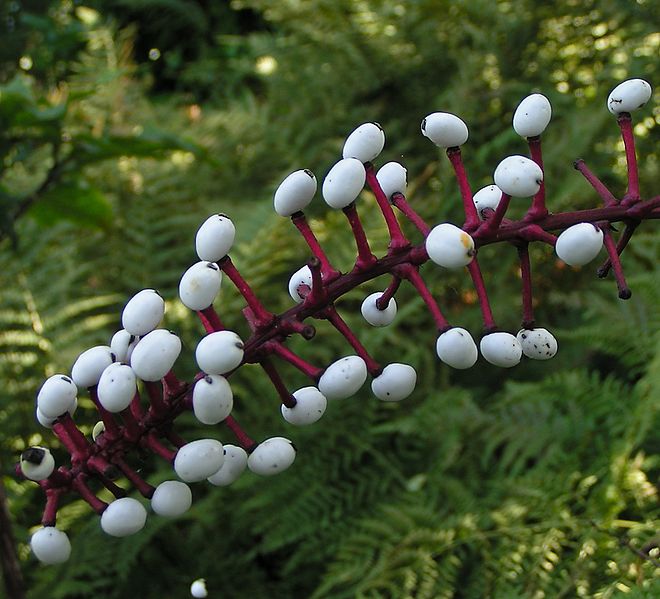Ranunculaceae - syn. Actaea alba Mill., white baneberry, Weißfrüchtiges Christophskraut, Dickstieliges Christophskraut
Perennial herb native to North America; stem 1-2.5 ft.; leaflets ovate or oblong, usually glabrous beneath; terminal raceme short at anthesis, with congested flowers, later elongate, white; stigma sessile, wider than the ovary; fruiting pedicels red, 1-2 mm thick; berries globular-ovoid, white
http://en.wikipedia.org/wiki/Actaea_pachypoda
Actaea alba roots
Uses. A decoction of dried roots of the White Baneberry is used in Amerindian folk medicine as a remedy for colds and coughs, childbirth pain, convulsions, as a gargle and for itch. [Moerman D, Foods, Drugs, Dyes, and Fibers of Native North American Peoples; American Indian Ethnobotany Database]
Toxicity. The roots are regarded as irritant if ingested or applied to the skin. [CRC]

